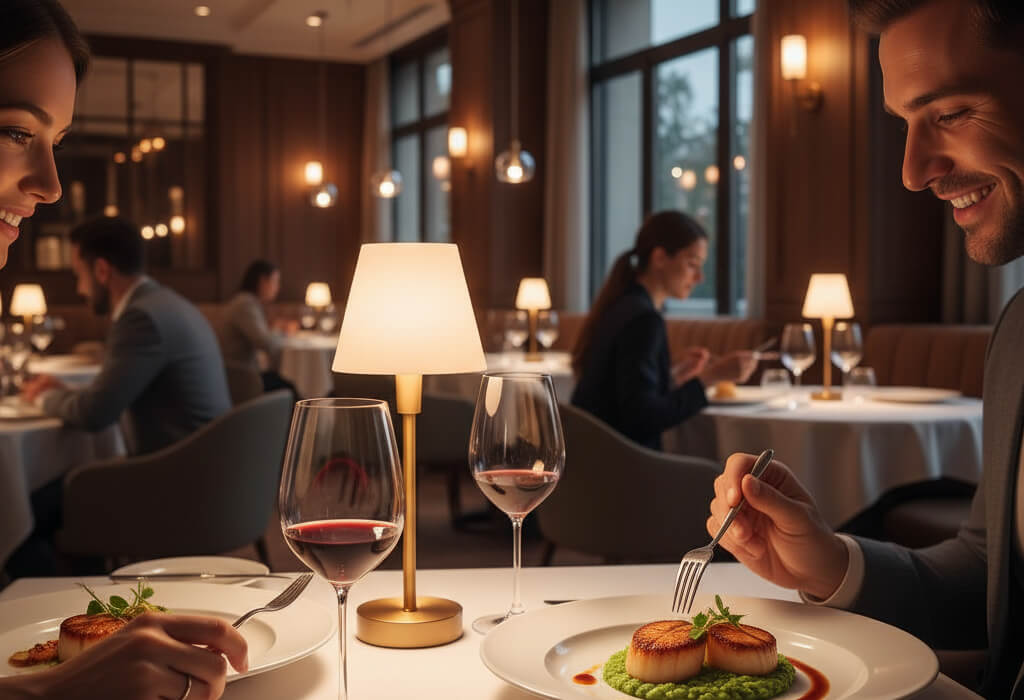October 06, 2025

Have you ever wondered why even a basic pasta dish, a grilled sandwich, or a bowl of soup seems to taste better at a restaurant than when you make it yourself?
It’s not just about ingredients or technique — it’s about how your brain interprets the entire experience. From the ambiance to social context, from anticipation to plate presentation, restaurants are experts at engaging your senses and emotions. And that’s exactly why your meal feels more flavorful, memorable, and satisfying.
Let’s explore the fascinating psychology and sensory science behind why food tastes better at restaurants — and how smart restaurant owners can use this to their advantage.
The space around you influences how you experience taste — this is called contextual conditioning. Elements like:
All these factors prime the brain to enjoy a meal before the food even arrives.
A study from the University of Oxford’s Department of Experimental Psychology found that diners rated the same food as tasting better when served in a beautifully designed environment with curated lighting and music — versus a plain, utilitarian space.
Pro Tip for Restaurants: Extend this “atmosphere” to your website and social media. Inconsistent or poorly designed online experiences can break the illusion. As highlighted in RocketPages’ guide to common restaurant website mistakes, disjointed visuals or outdated branding online can dilute the emotional connection before guests even walk through the door.
When eating at home, your attention is often split: Did the sauce simmer too long? Did you forget to buy parmesan? Is the kitchen clean?
In contrast, dining at a restaurant allows for total focus on the food. No distractions. No cleanup. Just immersion.
But beyond peace of mind, the service interaction also plays a psychological role:
Brand Tip: Your staff are part of your brand story. Their tone, knowledge, and attentiveness are extensions of your digital and physical presence. That’s why, as RocketPages explains in Why Every Server Should Know Your Website, training your team to align with your online messaging boosts trust and consistency.
Flavor is not isolated to the tongue — it’s a combined output of multiple senses:
Studies from Oxford’s Crossmodal Research Lab show that even background music changes flavor perception:
That’s why top-tier restaurants curate playlists to align with their menu items — a form of edible storytelling.
Design Application: Digital experiences can echo these cues. Use high-quality food photography, ambient videos, and mood-appropriate music in your restaurant’s digital marketing to engage senses before guests arrive.
Flavor begins before the meal — in the mind.
This is called sensory expectation, and it’s shaped by:
When diners anticipate a delightful meal, their brain primes itself to interpret the experience more positively.
Tools like retargeting ads and influencer partnerships are powerful because they plant a seed of expectation — boosting the perceived value and flavor before a guest ever walks through your door.
A well-composed photo on Instagram isn’t just pretty — it literally enhances how good the food will taste.
Eating out is more than sustenance — it’s an event. And when something is emotionally meaningful, our brains process it more vividly.
This phenomenon is known as the “occasion effect.” When we associate food with:
We attach positive emotions to the taste — even if the food itself isn’t objectively extraordinary.
According to the Cornell University School of Hotel Administration, diners rate their satisfaction higher when they dine with others or during a celebratory event, regardless of portion size or price. Emotional association enhances perceived value.
Tip for Restaurants: Lean into this by:
Food tastes better at restaurants not because it’s always more expertly cooked — but because the total dining experience is engineered to enhance perception. Smart restaurateurs understand that flavor is a multisensory, emotional event.
From ambiance and service to online storytelling and expectation-building, every detail matters.
By aligning your physical experience with your digital presence, curating atmosphere, and tapping into sensory psychology, you don’t just serve food — you create moments that taste better and last longer in memory.
Check out these expert resources:
Stay up to date with the latest tips, expert insights, product reviews, and step-by-step guides to help you grow, create, and succeed—no matter your industry or passion.